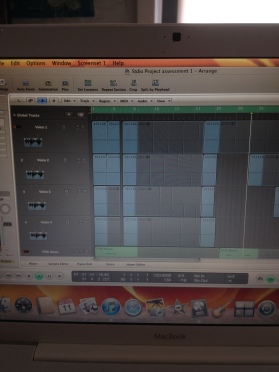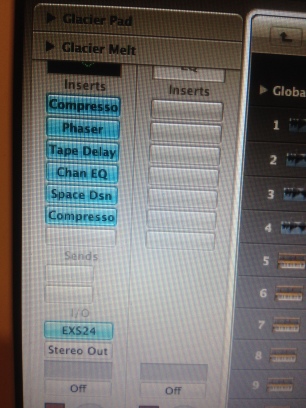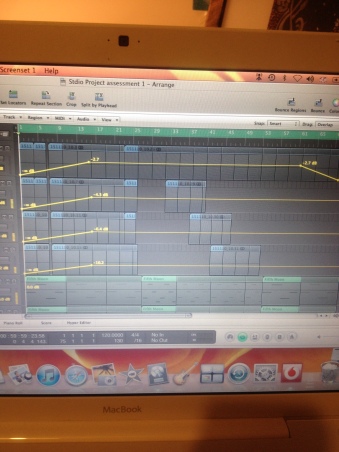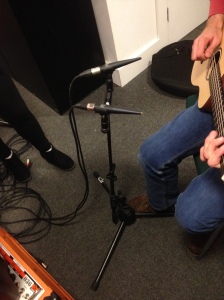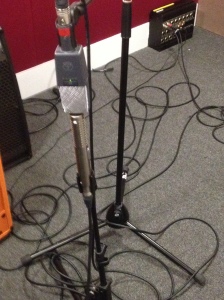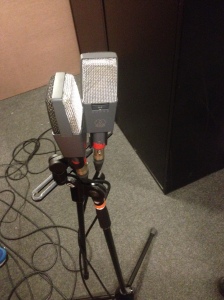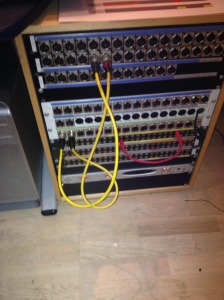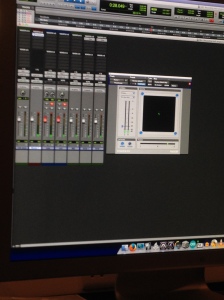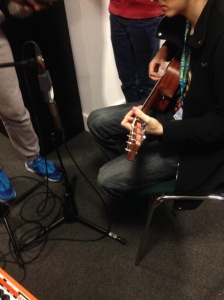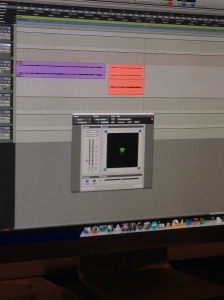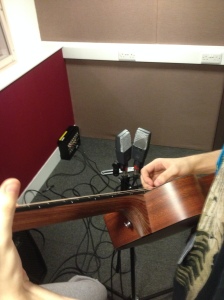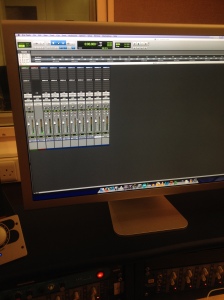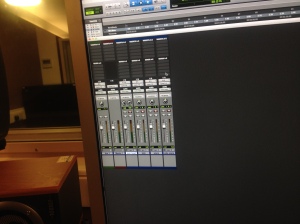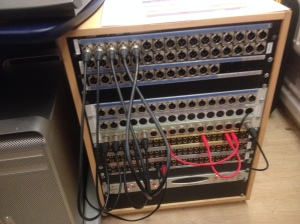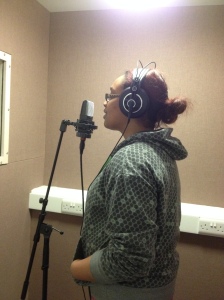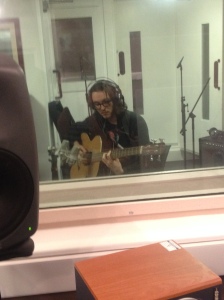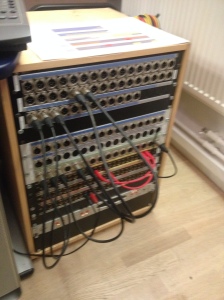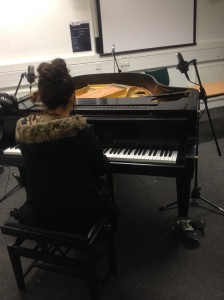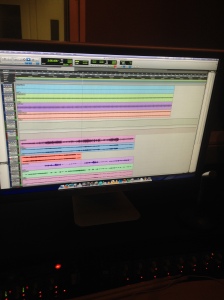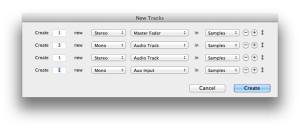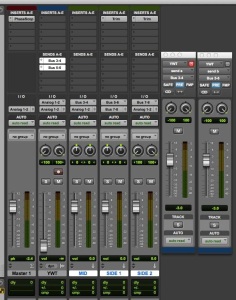For my 2nd assignment, I will be emulating the production technique of Trent Reznor, to be exact his Cacophony of Beats as well as Frank Zappa’s technique of Xenochrony.
Trent Reznor:
2 of the 6 steps he took to create the Cacophony of Beats and the 2 I will concentrate on are as follows:
Inspiration
Using a technique they perfected on NIN’s 2007 album, Year Zero, Reznor and producer Atticus Ross began by recording disparate families of musical noise. “We would create—with no preconceived notion of what it was going to sound like—several different rhythm sections or drumbeats and then chop between them to create something else,” Reznor says.
Library
Reznor used his roomful of instruments—a vacuum-tube-powered drum machine, a Casio SK-1 keyboard with a bent circuit board, and so on—to put together a library of analog and electronic beats. He transformed those loops with software so they’d have a uniform tempo and loaded them into a keyboard. Then he could play them back on top of each other or cut between them. (Wired, 2010)
Frank Zappa:
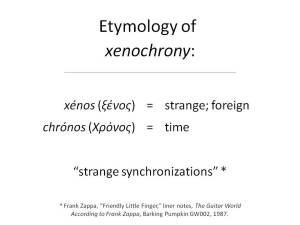
Definition of the word taken from the Greek Language
Xenochrony is a technique where various tracks from unrelated sources are randomly synchronised with each other to make a final composition with rhythmic relationships unachievable by other means. This is seen as a good method of creating pieces with irrational tempo ratios between the individual parts. (Electric Acoustic Resource Site, 2007)
A classic example of this method being used can be found in the song Rubber Shirt, taken from his 1979 album Sheik Youbouti.
The drummer was instructed to play in a eleven-four time signature, the drum part was extracted and the bass part was designed to play along with another song at another speed, another rate and in another time signature; four-four. This was then removed from that master tape and then the two were sandwiched together. The musical result is the result of two musicians, who were never in the same room at the same time, playing at two different rates in two different moods for two different purposes, when blended together, thus creating a third result which is musical and synchronizes in a strange way. (Marshall, Bob (1988), Interview with Frank Zappa)
My Production:
I decided to combine both these production techniques, but I wanted it to come across as more of a sound scape rather then a musical piece if anything else. However, I did want to incorporate musical elements because that is just as integral to the piece due to the message behind it (which I shall explain at the end of the blog) I did not want my piece to sound as though it had a basic structure due to this message and I felt as though combining the production technique of The Cachophony of Beats and Xenochrony would best suit my ideas.
I’m interested in creating something that has a set chord progression that I can then chop and rearrange to produce a track that is out of my comfort zone, as well as inputting different beats so that I can do the same thing to them.

Arranged Drum loops in Blue and Midi in-putted chord variations in Green
I began by finding different drums and beats loops using Logic Pro 9. I chos After I found the 5 that I was happy with, I then went on to constructing the chords: Em, D, Am, C and G. I used these chords on every synth/ keyboard effects that is on the track, I just changed which order I’ve played them in as well as the rhythm of it.

Colour coordinated audio files
On every recording that I have done for this track, I only listened to what I just recorded rather then everything overall. After exporting my files as audio, I colour coordinated them so that I knew which ones were the beats (Purple) and the chords (Cream).
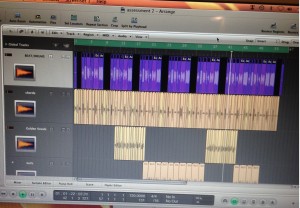
The audio files chopped and rearranged
I started chopping and rearranging the different beats first, the beats and sounds are out of time. I moved on to rearranging and chopping the chord tracks, I arranged them randomly without actually listening to what it sounded like.
After doing this I took 2 of the original recordings that were not rearranged and placed them in certain points of the track. As the original chord and sounds were played, I gradually decreased the volume of the frantic disjointed sounds. This was so that it aids as a rest from the random sounds, however the chopped and rearranged sounds increase in volume but it stays under -5 till a brief moment at the end.
This piece sounds as if though are 2 songs being played at the same time, that they have no connection to one another.
The rearranged beats and chords symbolises over-thinking and anxiety, the beats and chords decrease in volume as the straight chords are being played, straight chords symbolising clarity of thought. However, the rearranged chord and beat is always in the background as the straight chords are being played, this symbolises the determination to think and remain calm though there is always the battle that reoccurs in our heads: over-thinking Vs Clarity of thought
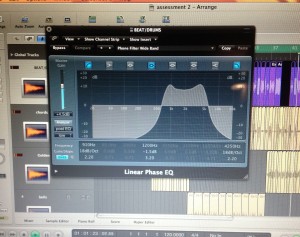
EQ for the Beat, Phone filter effect
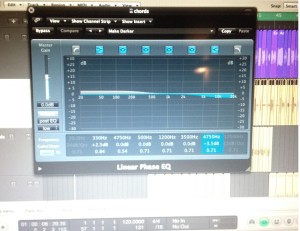
used slightly lower frequency on the rearranged chord
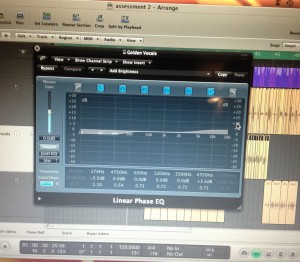
Eq the straight chords so that the overall sound was brighter
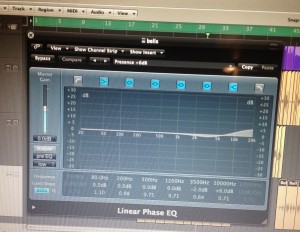
EQ for the bells

One example of where I used reverse effect, however I have used this effect on other instrument in this track
In the future I would like to use this technique to produce more songs with, but in a more conventional way as in adhering to a specific time signature/tempo and with a verse, chorus format.

